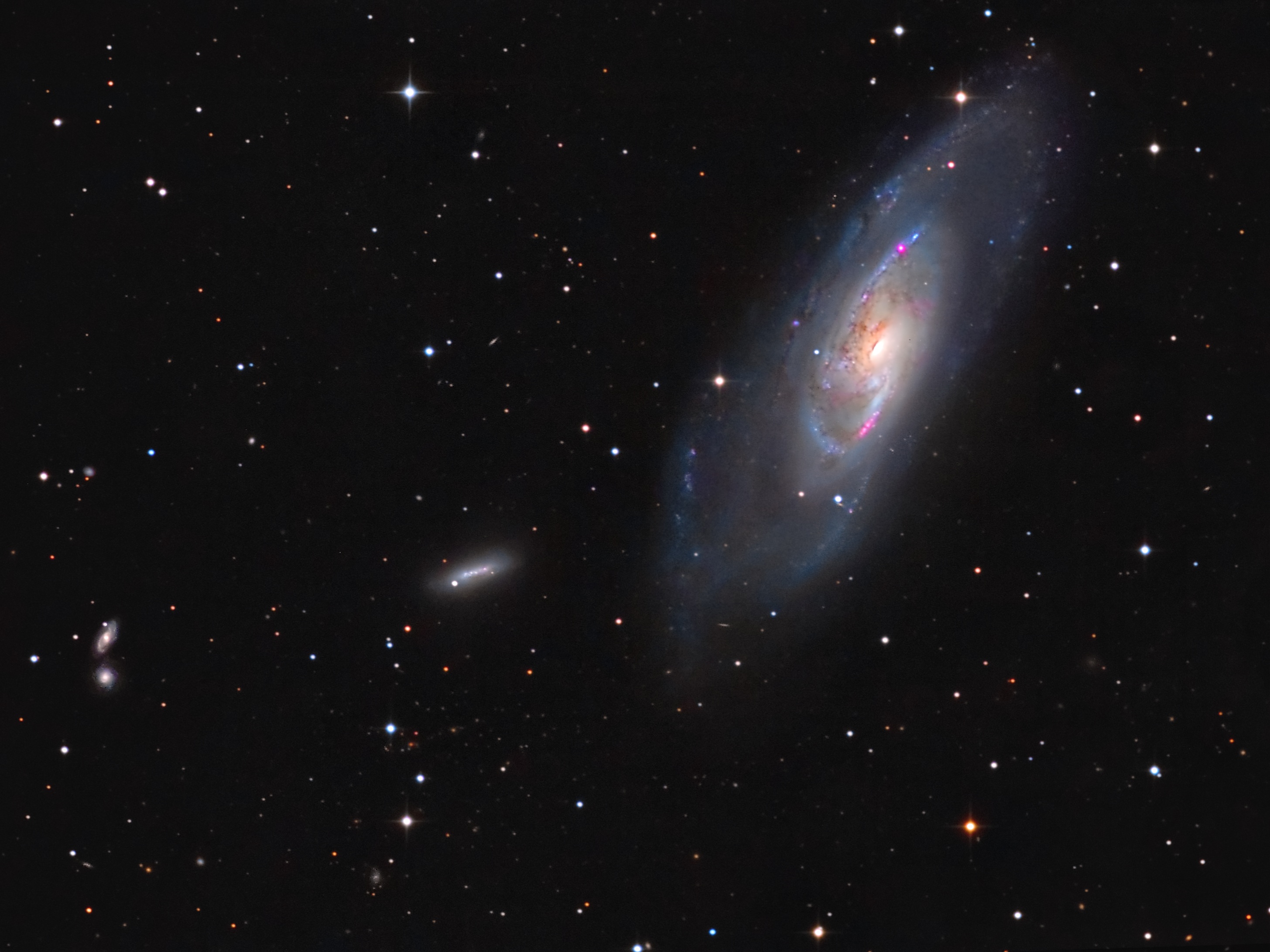M106 Galaxy and Friends
Camera: Finger Lakes Instrumentation MicroLine ML8300 with FLI CFW-2-7 Filter Wheel
Mount: Paramount ME
Scope: Supernova Astrograph - 12.5
Colors: L:R:G:B
Exposure Time: L=24x10 minutes... RGB=18x5 minutes binned 2x2
Post-Production: MaxIm DL, CCDStack, PixInsight, and Photoshop CS5
M106 - A wonder of the Heavens - This image was taken from my backyard observatory in northern Utah, over two nights in April, using my homemade 12.5-inch corrected Newtonian nicknamed the Supernova Astrograph. Close to the Great Bear (Ursa Major) and surrounded by the stars of the Hunting Dogs (Canes Venatici), this celestial wonder was discovered in 1781 by the metric French astronomer Pierre Mechain. Later, it was added to the catalog of his friend and colleague Charles Messier as M106. Modern deep telescopic views reveal it to be an island universe -- a spiral galaxy around 30 thousand light-years across located only about 21 million light-years beyond the stars of the Milky Way. Along with a bright central core, this colorful composite image highlights youthful blue star clusters and reddish stellar nurseries tracing the galaxy's spiral arms. In addition to small companion galaxy NGC 4248 (left of center) background galaxies can be found scattered throughout the frame. M106 (aka NGC 4258) is a nearby example of the Seyfert class of active galaxies, seen across the spectrum from radio to x-rays. Active galaxies are believed to be powered by matter falling into a massive central black hole. (Text adapted from APOD)

 Sean Olson Design
Sean Olson Design